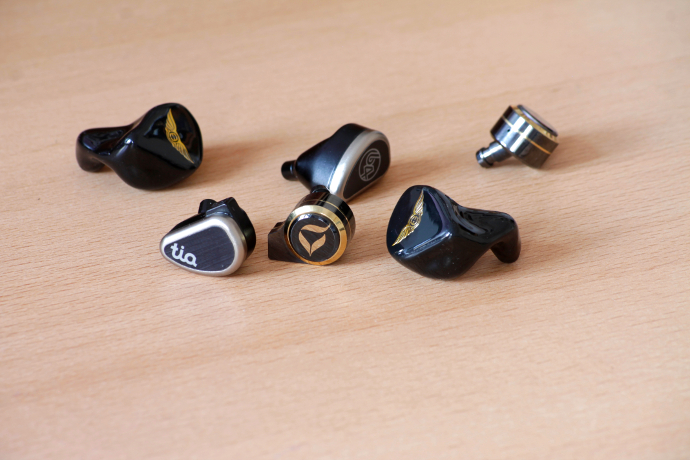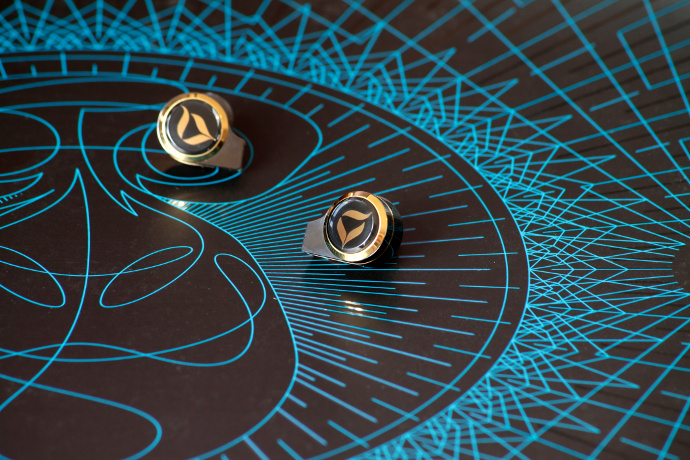Sound
[responsivevoice_button]
The following impressions are based on extensive listening sessions with various sources. I have mostly used the Lotoo PAW Gold Touch and PAW6000 on my daily commute. At home and at the office I’ve used the Chord Hugo2 or Mojo as well as the Woo Audio WA11. Dita recommended a burn-in phase of minimum 150 hours. I let the Dream XLS on constant play for almost ten days straight before I started listening.
Most single dynamic IEMs I have listened to tend to have a boosted bass. Not the Dream XLS. The Dita has probably the least amount of bass I have heard in a dynamic driver. The XLS has a more upper mid to treble forward signature, that emphasizes on female vocals and brighter instruments. Bass or lower midrange warmth doesn’t play a high role here, so if you’re after that, you can stop right now.
The lows on the XLS are tightly bound and punchy. Anything below 200Hz is just rising and if you like your bass hard and heavy, you won’t find your needs satisfied. This is definitely not a bass-head’s IEM. Bass body and weight are light and small. However, there is still decent richness in them.
Sub-bass extension is okay, it does not really push loads of volume here. Don’t expect much rumble or drive. Mid and upper bass are gaining a bit in presence compared to sub-bass, but they are not exactly forward. Bass overall is missing substance and physicality for a more organic and realistic sound.
The lower midrange follows the route of the lows. It’s a lighter presentation that doesn’t put much attention to body and weight. Lower pitched male vocals are missing some of the vibrance and roughness that often defines them. With lower key instruments it’s audible that they are tilted upwards by their overtones. This results in timbral inaccuracy.
The mids overall are again light, but fast and energy loaded in the upper midrange. Instruments have good air around them and enjoy good space. The Dream XLS does very good in respect of a sense of space to me. It creates a well formed sound-stage and has fine dimensions in terms of width and depth. Layering and resolution are also good. The XLS renders a high definition picture, where you can perceive details very precisely. The background is relatively dark, but there is still room for improvement in my opinion. Instruments don’t stand on their own solid ground but are often mixed into each other.
Vocals enjoy center stage with the Dream XLS. Male singers miss a bit of weight and density though. Female vocals and higher male vocals can become forward sounding to an extend of almost being shouty. Singers have good levels of air, so they don’t sound congested, chesty or nasal. There is a nice open feeling to them, that is usually not easy to find in other monitors.
The Dream XLS does have a tilt towards its highs. If you like your cymbals and violins to sound more forward, this is the IEM to get. Treble is emphasized and pronounced. However, the XLS does not tend to sharpness or sibilance. Usually with treble forward and bass light signatures there is a risk of having hard edges and hot treble. The XLS does stay clear of that. Highs are energetic, sparkly and shine bright with nice richness.
The Dream XLS can be summarized as an upper-midrange and treble focused IEM. It puts its attention on technicalities, rather than pleasure. In my opinion, the XLS misses a considerable amount of lower midrange and bass action to make up for a more organic sound. I’m usually not a person that craves warmth, but the XLS could certainly use some. Even for my taste.

Dita Audio Dream XLS and competition
Comparisons
With the price of 2,300 USD the XLS falls into a pretty crowded category. As a single dynamic driver, it stands there alone though. I will compare the Dream XLS to Dita’s very own Fealty as well as two other monitors that come close in price. Namely the 64 Audio’s tia Trió and Empire Ears’ Legend X.
I can only give comparisons to IEMs that I have solid experience with. Show-conditions and dealer visits are far from credible, therefore I will never include them in reviews. If there is an IEM that you wish included here, let me know. If I have it in my arsenal, I can compare it.
All mentioned prices are in USD and comparisons were done using the respective stock cables.
Dita Audio – Fealty (1DD; 1,299$)
Dita’s Fealty is one of their Twin IEMs together with Fidelity. They use the same driver but with different coating and that results in a different sound altogether.
The Fealty has a more balanced sound to me, with a higher prominence in the bass section. It delivers more punch and drive in its lows. Fealty puts more body and weight into the entire low end than Dream XLS.
The Dream XLS on the other hand has a faster and more energetic sounding midrange. The Fealty is fuller, richer and denser in its mids though. The Dream XLS goes for a more upper midrange focused sound, that emphasizes on female vocals and clarity. The Fealty goes for a pleasant tuning, that is more enjoyable to me on the long run.
Dita’s flagship does perform better in terms of technicalities. It has a wider and deeper sound stage, layers more sophisticated and has higher resolution. Instruments sound sharper separated on the XLS as well. Its background is darker, and its imaging capabilities are more advanced. On top of that, it also brings out finer information of the tracks with more precise rendering.
The treble of the Dream XLS is brighter, more forward and faster. It is also richer and wetter though. The Fealty sounds a bit dry and thin in comparison to my ears. Neither of the two have any problems with harshness or sibilance.
The final words on page three!







